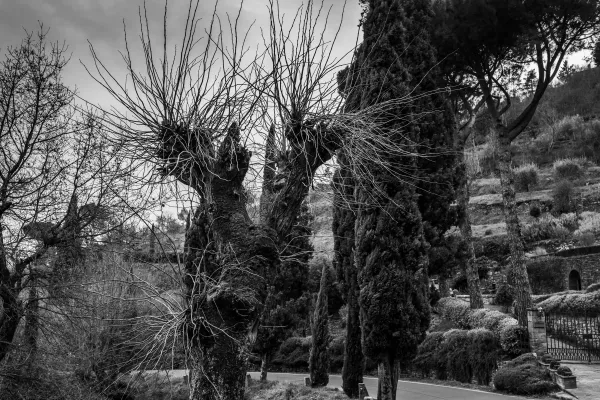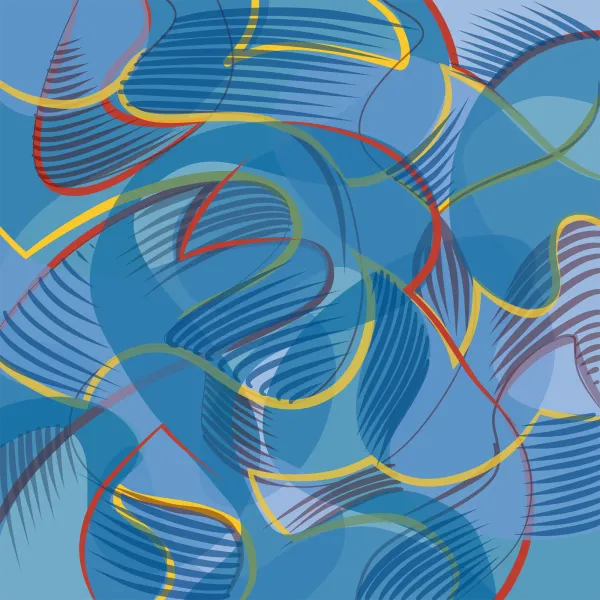What’s the Big Idea?
Start with one set of small visual ideas. Do something with it. Add a few more. Do something else. Repeat.

SPOILER: it’s actually an accumulation of small ones.
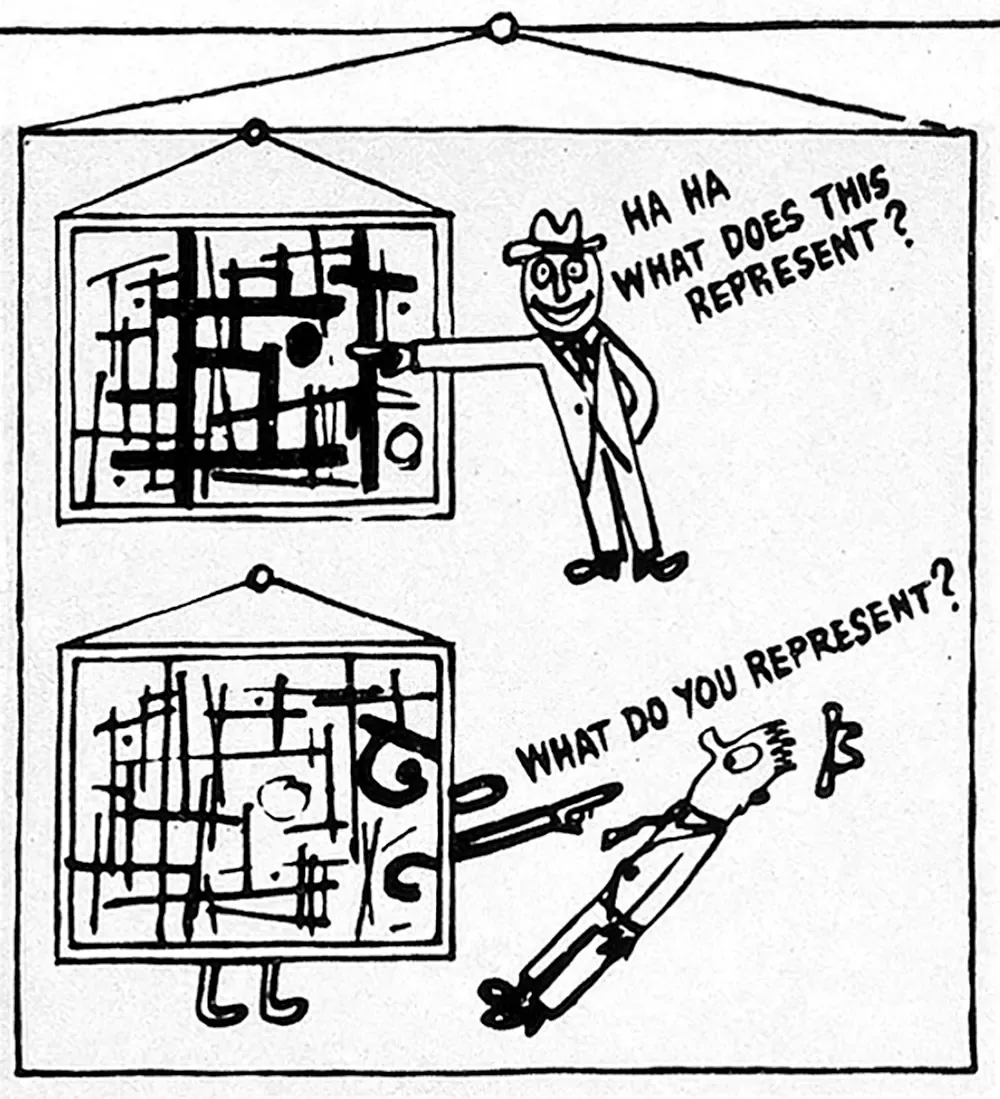
This panel is from Ad Reinhardt’s cartoon series How to Look, which he made for PM daily during 1946-47. When I first happened upon those comics they helped me clarify my thinking about abstract painting (and his abstract paintings were a big help, too).
That thinking helped me see my previous series of nonobjective digital paintings as a “lab,” a place where I could experiment with color, value, and form for their own sake, with no obligation to contain any idea bigger than the process of making them. I used limited ranges of colors applied in multiple layers of notes and opacities, letting the meaning (if there was one) present itself in the finished paintings.
Or: start with one set of small visual ideas. Do something with it. Add a few more. Do something else. Repeat.
In 2024 I’d like to return to that process, and use some of the new AI tools I’ve been experimenting with to generate small ideas. For this set of pictures, I began by entering this prompt in Adobe Illustrator’s “Text to Vector Graphic” AI dialog:
Three-swatch color palette sampled from Modernist paintings 1914-18
After running a half-dozen variations, I used the results to put together this array of fifteen colors:
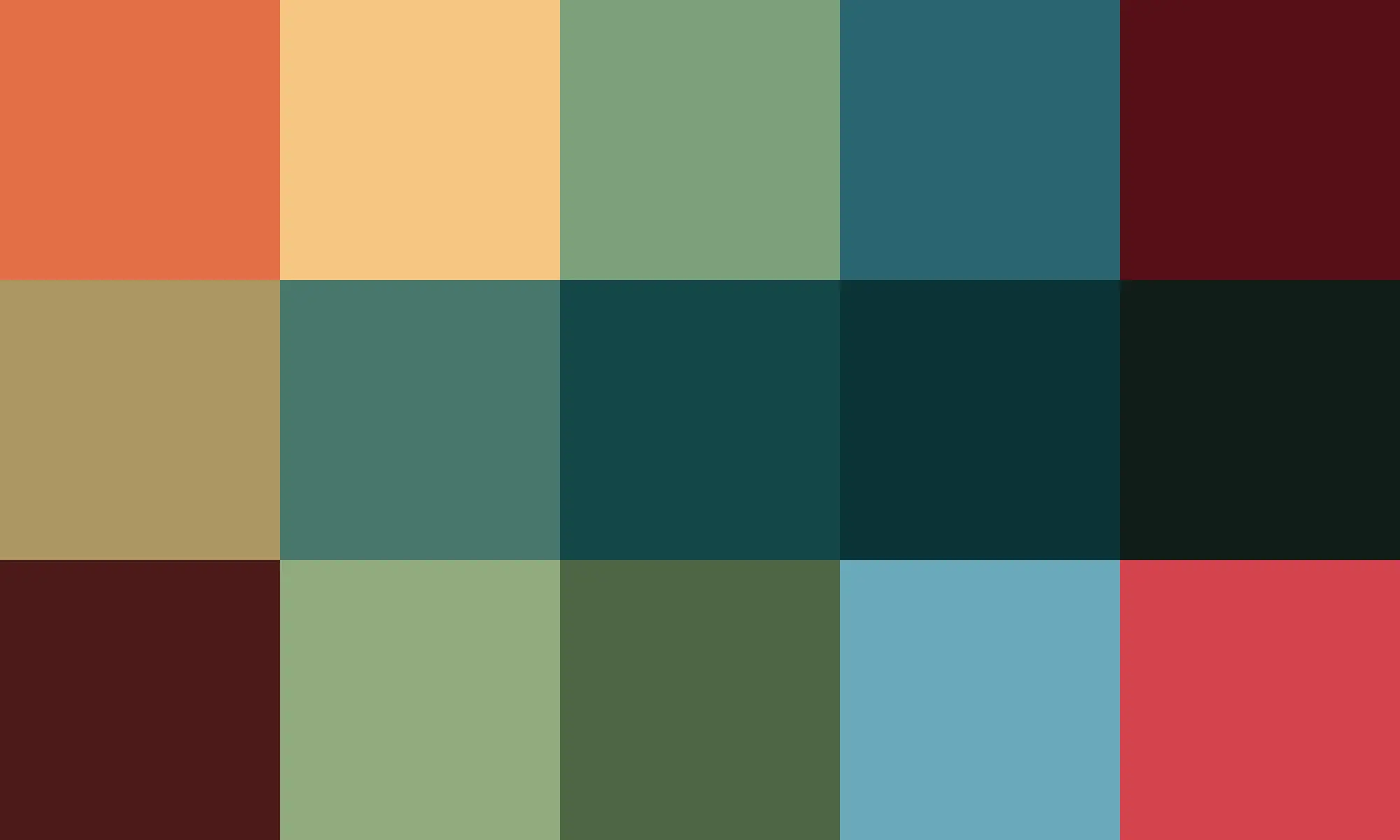
I then picked a few of my favorites, and entered this prompt into the DALL-E 2 AI system:
A nonobjective oil painting collaboration between Joan Mitchell and Willem de Kooning with a 1x1 aspect ratio using these four colors: #e46f46 #6aa9bb #d5434e #e6e6e6
“A 1x1 aspect ratio” means “a square composition.” The colors are in hex notation, which names three colors from my color array, with a light grey thrown in as a spoiler. Of the three pictures generated, two entirely missed the mark, but one was interesting — it’s on the far left of the row below. I then asked DALL-E to generate four more variations based on that picture.
I made some more color variations of each of those compositions using Photoshop, focusing on inverting the colors (i.e. making a color negative), exploring inversions of both color and luminosity. I chose a final set of five “studies,” and moved them into Adobe Fresco:

Fresco is my digital painting tool of choice, and it allowed me to use the studies as base layers that I could paint over. I could also bring the “study” layer back into view mid-paining as a reference for further improvisation. Fresco sampled a full palette of color swatches from each study, and that’s what I used to paint the final versions:
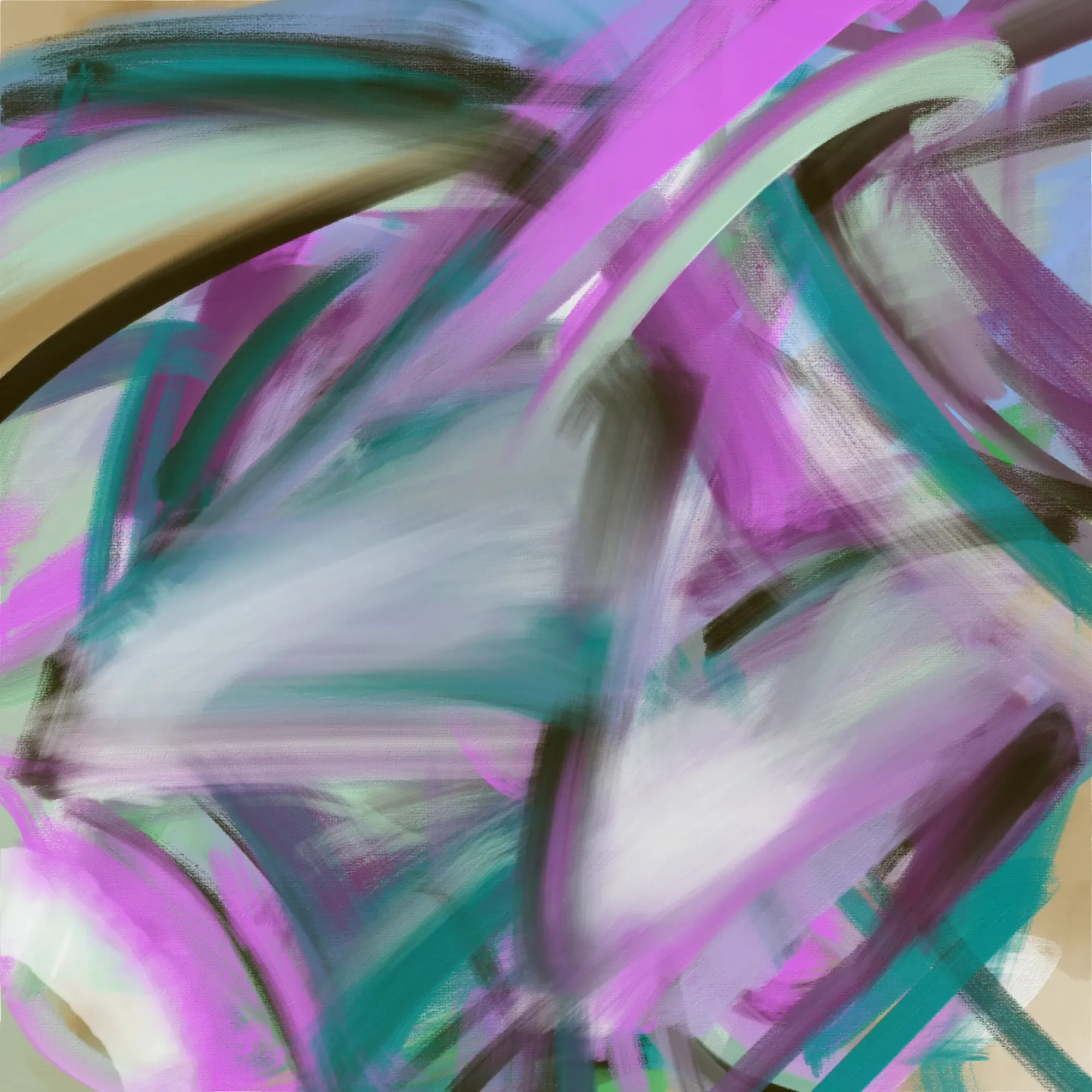
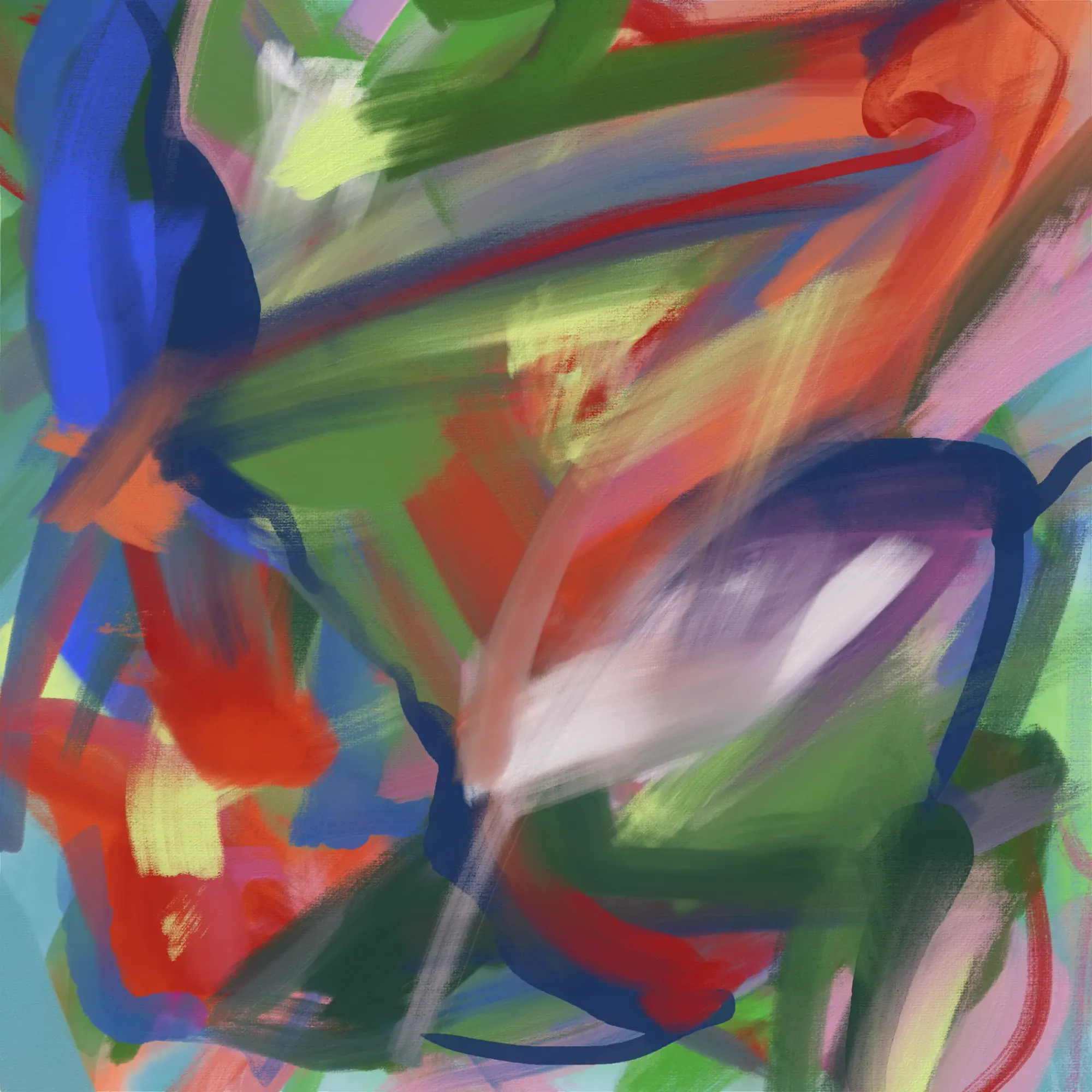
“But wait!” demands my inner critic (& perhaps yours too), “What’s the big idea?”
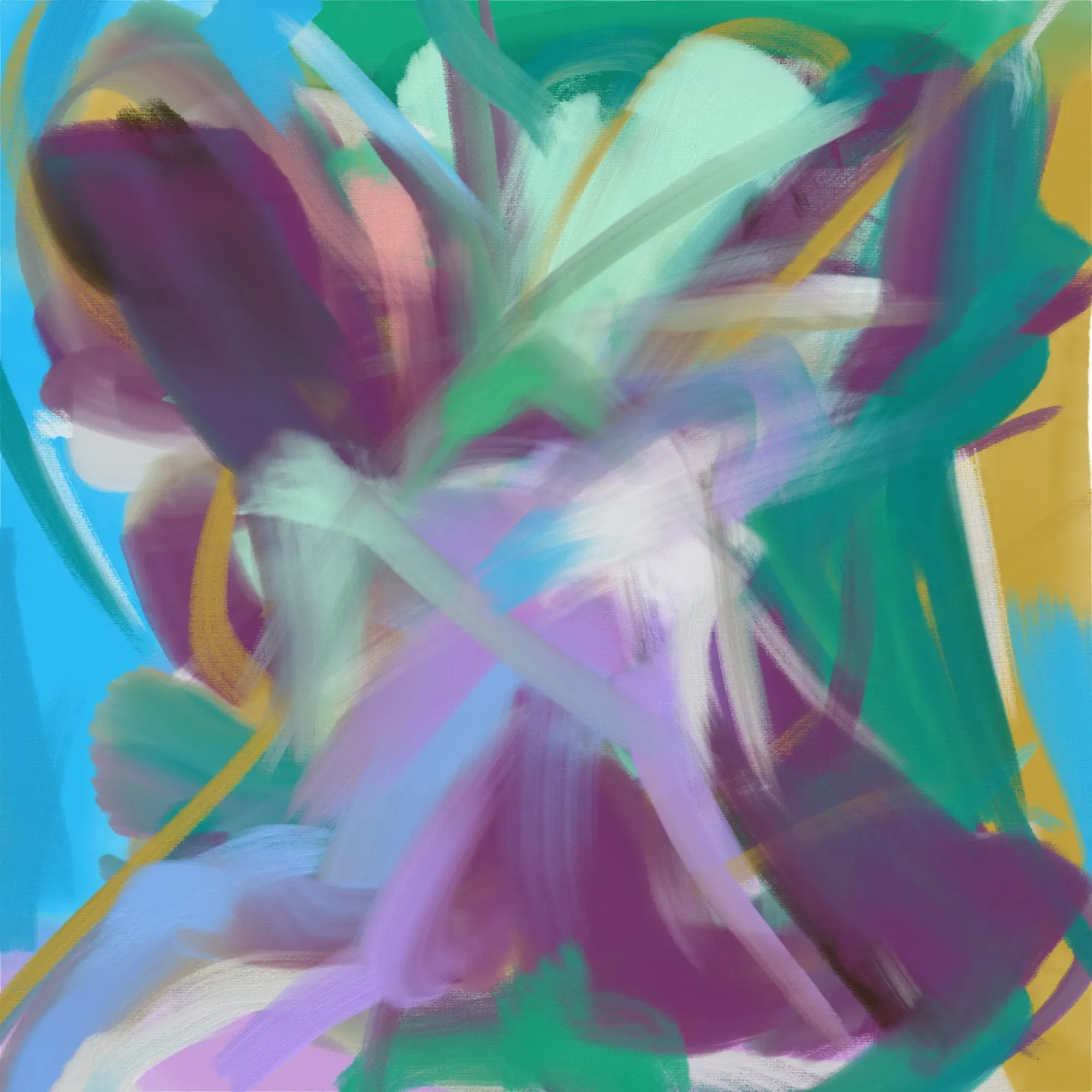
Again, Reinhardt hands me a clear (and useful) answer:
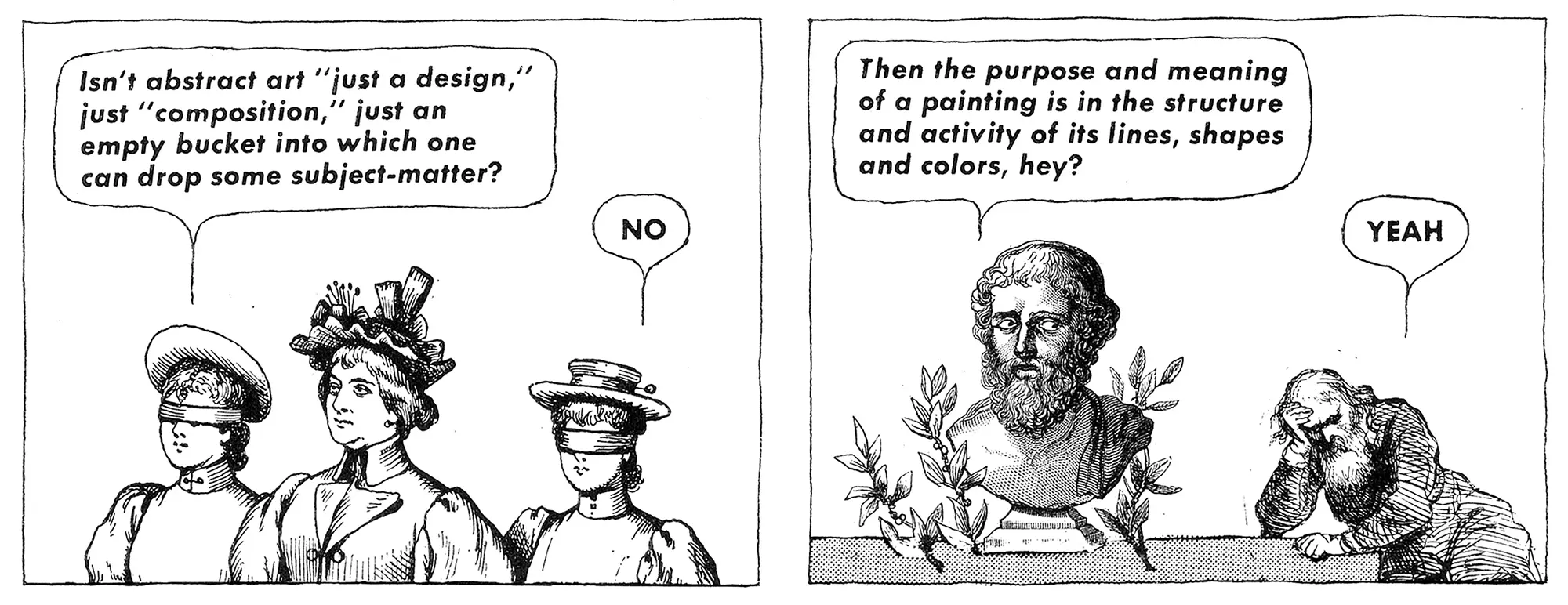
Many (if not all) of the decisions I make while making abstract paintings are quick and defer to an intuitive leap (or maybe even an accident) instead of a deliberate rational process. I inserted AI assists into this set of works to see if they could do what I would have done anyway: pull options from a large pool of information which is readily accessible to me, yet beyond my conscious control.
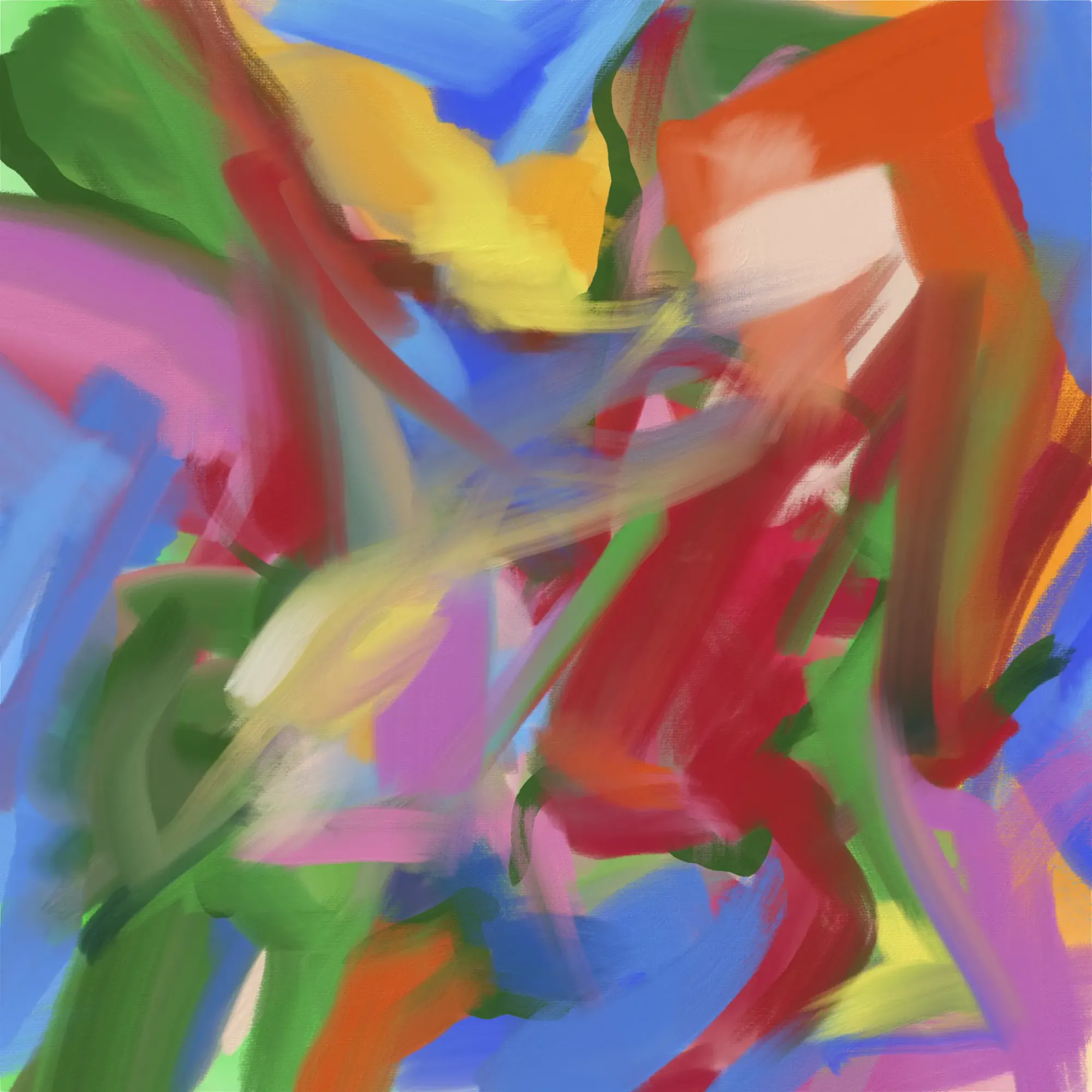
If the “big idea” is indeed in the structure and activity of its “small (visual) ideas,” it seems to me that I can get the small ideas from anywhere, and they’ll still help the painting’s purpose and meaning emerge.
Or: a more clear (and useful) one-liner from physicist Murray Gell-Mann: “you don’t need something more in order to get something more.”



